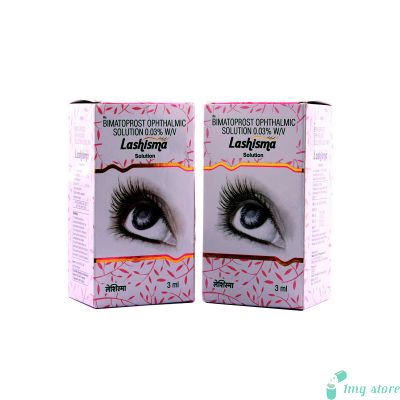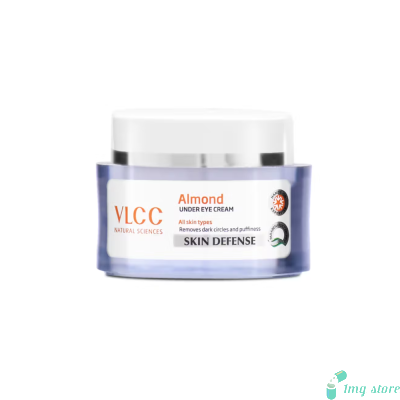Seaweed Eye Gel (Eye Care)
Seaweed Eye Gel is a topical ophthalmic solution designed to address various eye-related concerns. This unique formulation harnesses the power of seaweed extracts to provide a refreshing and effective solution for eye care.
Introduction to Seaweed Eye Gel (Eye Care)
Seaweed Eye Gel is a topical ophthalmic solution designed to address various eye-related concerns. This unique formulation harnesses the power of seaweed extracts to provide a refreshing and effective solution for eye care. In this comprehensive guide, we will explore the dosage information, including missed doses and overdosing, its uses, potential side effects, precautions to consider before using Seaweed Eye Gel, and its interactions with other drugs. This information aims to help individuals make informed decisions about incorporating Seaweed Eye Gel into their eye care routines.
Seaweed Eye Gel (Eye Care) Dosage Information
Recommended Dosage
The appropriate dosage of Seaweed Eye Gel may vary depending on individual needs and the specific eye issues being targeted. Generally, it is advisable to apply a small amount of gel to the skin around the eyes once or twice daily. It is essential to follow the instructions provided on the product label or as directed by a healthcare professional.
Missed Dose
If a dose of Seaweed Eye Gel is missed, it is generally safe to resume the regular application schedule with the next planned dose. Do not double the dose to compensate for the missed application, as this may increase the risk of adverse effects. Consistency in application is key to achieving optimal results.
Overdose
Overdosing on Seaweed Eye Gel is unlikely when used as directed. However, if an excessive amount of the gel is accidentally applied to the eye area, it is advisable to rinse the eyes with clean water immediately. If irritation or discomfort persists, seek medical attention promptly. As with any topical product, using more than the recommended amount can lead to skin irritation or adverse reactions.
Some of the precautionary measures to be taken while using Seaweed Eye Gel
Patch Test
Before applying Seaweed Eye Gel to the entire eye area, perform a patch test on a small, inconspicuous area of skin. This helps identify any potential allergic reactions or sensitivities.
Avoid Contact with Eyes
Ensure the gel does not come into direct contact with the eyes. If accidental contact occurs, rinse the eyes immediately with clean water.
Discontinue Use if Irritation Occurs
If any skin irritation, redness, itching, or discomfort arises after using Seaweed Eye Gel, discontinue use and consult a healthcare professional if necessary.
Keep Out of Reach of Children
Store Seaweed Eye Gel out of the reach of children to prevent accidental ingestion or misuse.
Sun Protection
If using a Seaweed Eye Gel that contains photosensitive ingredients, be diligent about applying sunscreen when spending time in the sun to protect the treated skin from UV damage.
Key Functions Must Be Noticed of Seaweed Eye Gel (Eye Care)
Dark Circles and Puffiness
Seaweed Eye Gel is commonly used to address dark circles and puffiness around the eyes. The natural extracts found in seaweed are believed to have anti-inflammatory properties, which can help reduce swelling and discoloration in the under-eye area.
Hydration and Moisturization
This eye gel provides essential hydration to the delicate skin around the eyes. It can help combat dryness and keep the skin moisturized, which is crucial for maintaining a youthful and healthy appearance.
Fine Lines and Wrinkles
Seaweed Eye Gel is often used as a part of anti-aging skincare routines. It is believed to help diminish the appearance of fine lines and wrinkles, promoting smoother and more youthful-looking skin.
Cooling and Soothing
The cooling sensation provided by Seaweed Eye Gel can help alleviate discomfort associated with tired or strained eyes. It can be especially soothing after a long day or when experiencing eye fatigue.
Sun Protection
Some formulations of Seaweed Eye Gel may contain ingredients with mild sun-protective properties. While it should not be considered a substitute for dedicated sunscreen, it can offer an additional layer of protection against UV damage.
Some of the secondary Effects of Seaweed Eye Gel
Skin Sensitivity
Individuals with sensitive skin may experience mild irritation or redness upon initial use of Seaweed Eye Gel. It is advisable to perform a patch test before applying it to the entire eye area to assess any potential adverse reactions.
Allergic Reactions
Although rare, some individuals may be allergic to specific components in Seaweed Eye Gel. Allergic reactions can manifest as itching, swelling, or a rash. Discontinue use immediately if any signs of an allergic reaction occur.
Eye Irritation
Avoid direct contact with the eyes when applying Seaweed Eye Gel. If the gel comes into contact with the eyes, rinse them thoroughly with clean water. Prolonged eye irritation or discomfort warrants medical attention.
Discomfort
In some cases, individuals may experience a temporary stinging or tingling sensation upon application. This discomfort is generally mild and should subside within a few minutes.
Photosensitivity
If the Seaweed Eye Gel contains photosensitive ingredients, it is crucial to use additional sun protection measures when exposed to sunlight, as the skin may become more sensitive to UV rays.
Frequently Asked Questions (FAQs) about Seaweed Eye Gel
Q1. Can Seaweed Eye Gel replace my regular sunscreen?
Seaweed Eye Gel offers a mild level of sun protection due to its ingredients, but it should not replace dedicated sunscreen. Use sunscreen alongside the gel for comprehensive UV protection.
Q2. Is Seaweed Eye Gel safe for all skin types?
Seaweed Eye Gel is generally suitable for most skin types. However, individuals with extremely sensitive skin should perform a patch test before full application to ensure compatibility.
Q3. How soon can I expect to see results when using Seaweed Eye Gel for fine lines?
Results may vary, but with consistent use, you may notice an improvement in the appearance of fine lines within a few weeks.
Q4. Can I use Seaweed Eye Gel with my contact lenses?
Seaweed Eye Gel is for external use only and should not come into contact with contact lenses. Remove your lenses before application and wait a few minutes before reinserting them.
Q5. Is Seaweed Eye Gel tested on animals?
Most reputable brands produce cruelty-free Seaweed Eye Gel. Look for products with the "cruelty-free" or "not tested on animals" label to ensure ethical sourcing and production.
Significant Drug Interactions that Require Attention For Seaweed Eye Gel (Eye Care)
Potential Interactions
Seaweed Eye Gel is typically for topical use and is not commonly associated with significant drug interactions. However, it's essential to consult with a healthcare provider if you are using other topical medications or ophthalmic solutions concurrently.
Eye Medications
When using prescription eye medications, it is advisable to consult an eye care specialist before incorporating Seaweed Eye Gel into your routine. They can provide guidance on the appropriate sequence and timing for applying different eye products.
Cosmetic Products
When using Seaweed Eye Gel alongside other cosmetic eye products such as eyeliners or mascaras, exercise caution to avoid any interactions or adverse effects. It is advisable to apply Seaweed Eye Gel before other cosmetics.
Allergy Medications
Individuals using allergy medications, especially those administered as eye drops, should consult with a healthcare professional to ensure compatibility with Seaweed Eye Gel.
Eye Conditions
If you have pre-existing eye conditions or are undergoing treatment for eye-related issues, consult with your eye care specialist before using Seaweed Eye Gel to ensure it complements your treatment plan without any adverse effects.
| Manufacturer | : | Shahnaz Hussain, India |
| Equivalent Brand | : | Seaweed Eye Gel (Eye Care) |
| Generic Search | : | Ayurvedic |










